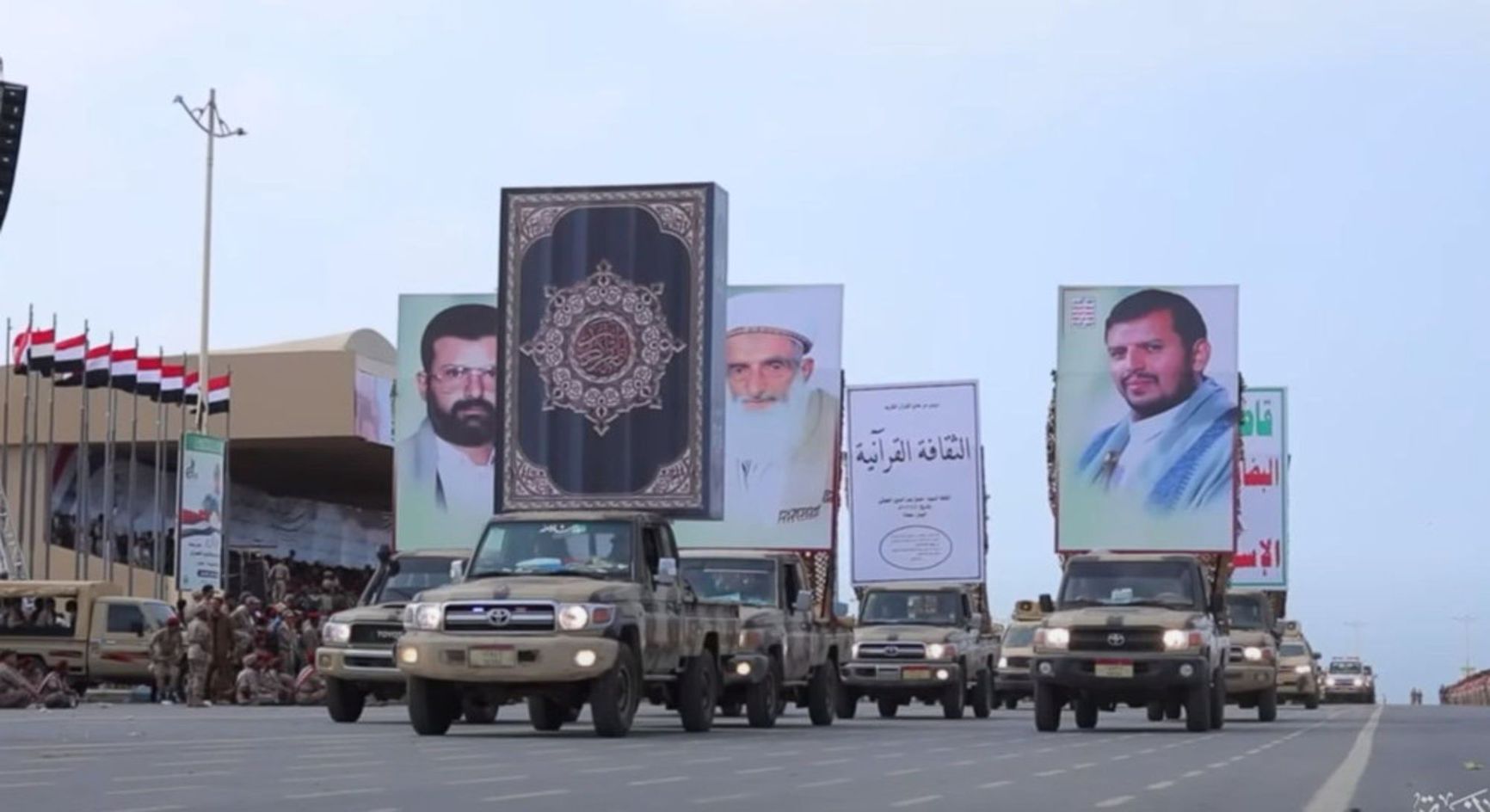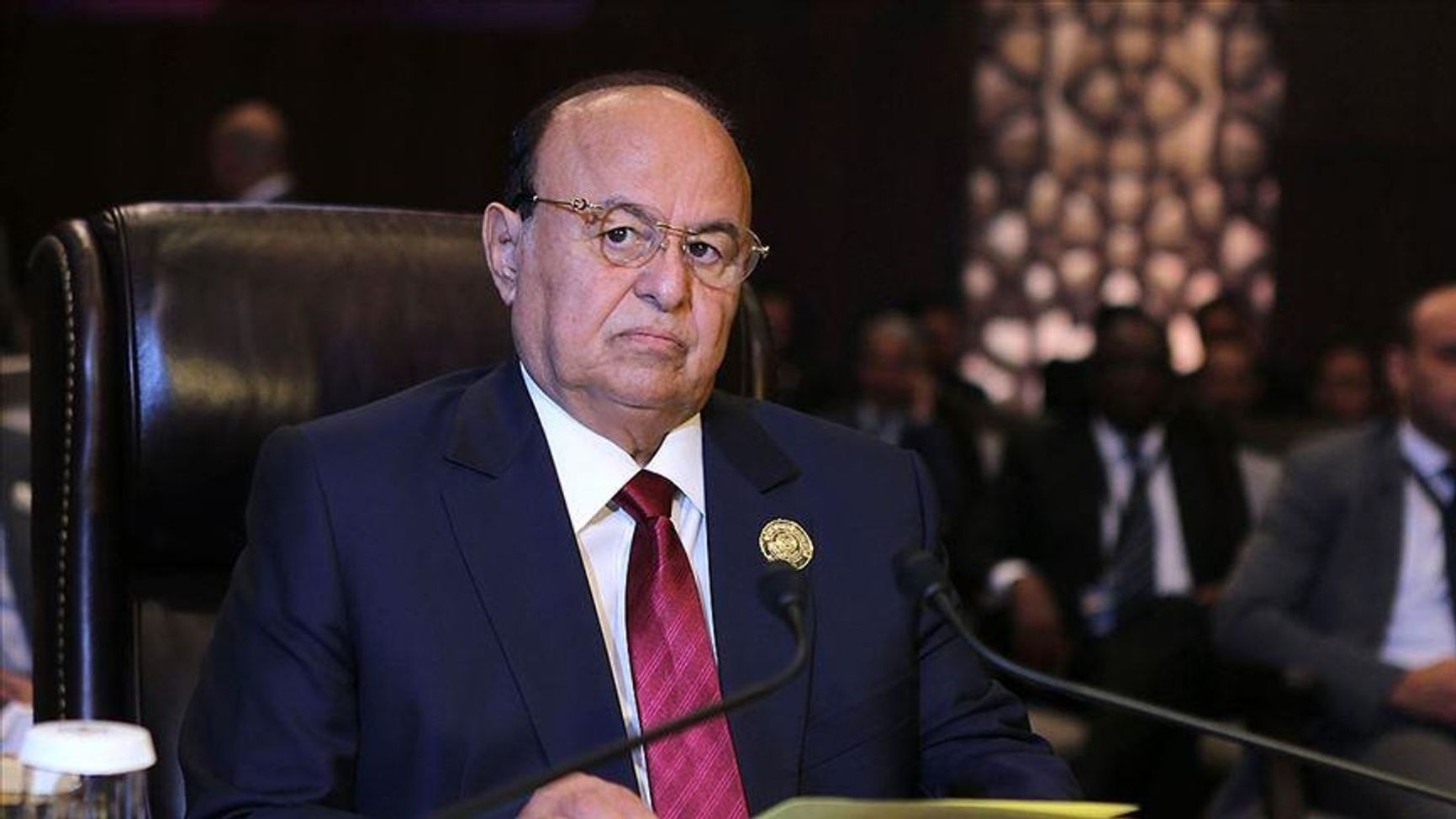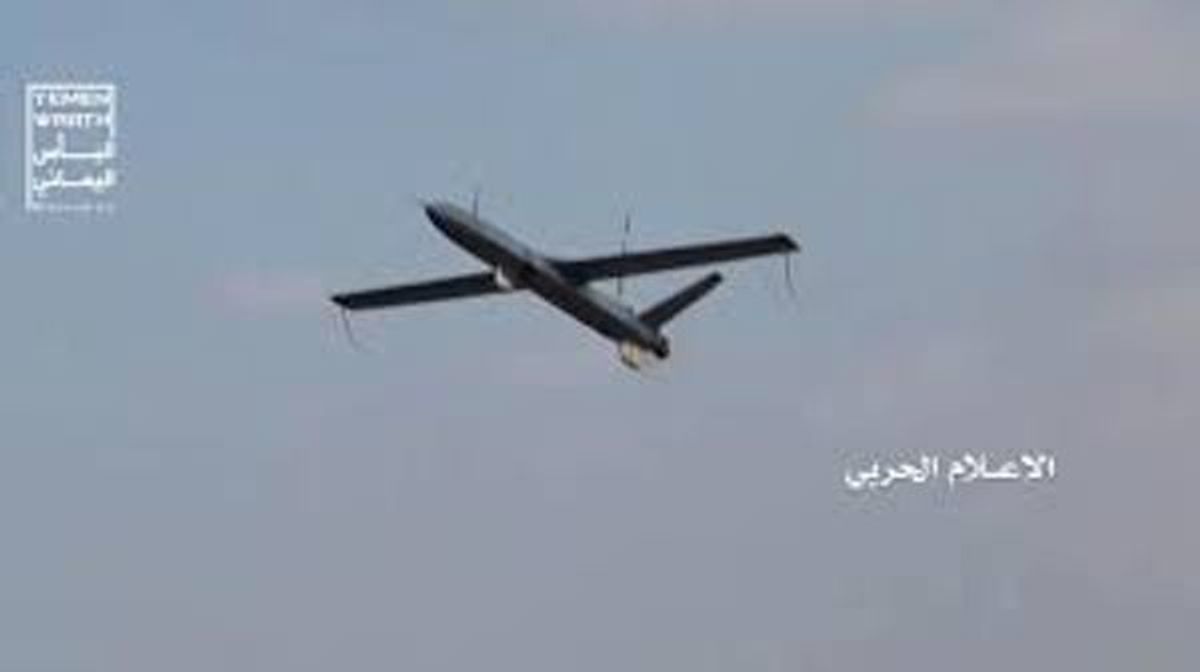

In the conflict against Israel, a singular ally has emerged in full support of the Palestinian group Hamas – the Yemeni organization known as Ansarallah. Despite being geographically distant from Israel by almost two thousand kilometers, the Yemenis initially sought to target the Jewish state with rocket attacks. As the strategy proved ineffective, they moved towards the unconventional method of piracy.
Content
Who are the Yemeni Houthis?
Iran's role
How the Houthis wage war
What the Houthis want
Who are the Yemeni Houthis?
In February 2021, U.S. Secretary of State Anthony Blinken signed a Revocation to remove the Yemeni group Ansarallah from the list of terrorist organizations, a designation it had received just a month earlier. This marked perhaps the first and only instance where an acting American official of Jewish descent reinstated a group into legal standing, whose official slogan includes the words “Death to America, Death to Israel, Damn the Jews.”
Blinken's decision stemmed from practical considerations: by that time, the fighters of Ansarallah controlled approximately a third of Yemen's territory, including the capital, Sanaa. Humanitarian aid to the inhabitants of these territories—millions of whom were and continue to be in dire need—could only be delivered through the structures of Ansarallah or, at the very least, with the group's involvement. Neither the U.S. government nor U.S.-sponsored charitable organizations could engage in the rescue of people who were already dying by the thousands from hunger and epidemics. As long as Ansarallah remained on the terrorist list, this aid would automatically be frozen, and the personnel of these organizations could face arrest. Hence, Blinken struck the Yemeni militants off the list of terrorists.
Ansarallah is a combat organization of Yemeni Shiites, primarily representatives of the Houthi tribe, and is more commonly known by its unofficial name—Houthis. Emerging in the 1990s more as a dissident circle than a terrorist organization, the Houthis became, in the early 2000s, arguably the main opposition force in Yemen. They accused the then-president of the country, Ali Abdullah Saleh, of corruption and of prioritizing the interests of foreign powers, especially neighboring Saudi Arabia and the United States, rather than the interests of their own citizens. In impoverished, agitated Yemen, which was resentful of the U.S. invasion of Iraq and was ruled by Saleh since 1978, the Houthis quickly found mass support. In response, Saleh initiated crackdowns on them, during one of which the movement's founder, Hussein al-Houthi, was killed. After his death, the radicalized Houthis and the central authorities of Yemen have remained in a state of constant war, occasionally interrupted by fragile ceasefires.

Parade of Houthi forces in Hodeidah, September 2022
Initially, this war was primarily concentrated in the rugged mountainous regions of northern Yemen—the ancestral lands of the Houthi tribe. However, in 2014, Ansarallah initiated an offensive in the southern part of the country, capturing several provinces and cities, including the capital. The Houthis claimed that their full-scale uprising was prompted by concern for ordinary people who suffered from the government's decision to cut fuel subsidies, immediately followed by an extremely painful surge in prices for essential goods.
However, the country's authorities (by then, the “Arab Spring” had already forced Saleh to step down, and President Abd-Rabbu Mansour Hadi had assumed office) insisted that the rebels' real goal was to dismember the country and establish a Shiite theocratic state on one of its fragments. Officials asserted that the Houthi separatists were actively supported by Iran, anticipating that the new state would become its satellite.
In fact, Yemeni Shiites had their own state in the very recent past. Officially recognized by a part of the global community, the Yemeni Shiite Kingdom existed from 1918 to 1962 and disappeared after a revolution that ended the monarch's rule. The monarch officially held the title of “Imam,” meaning the supreme Shiite leader. For Iranian Twelver Shiites, the number of imams is limited to twelve, the last of whom has been in a mystical state of concealment for a thousand years and will return before the final battle of good and evil. Yemeni Shiites belong to another branch of this religion—Zaydism. According to their doctrine, any descendant of Ali Abu Talib—the son-in-law of the Prophet Muhammad—can become an imam, provided they have the determination to lead people in a war against tyranny and injustice.
The partly recognized Yemeni Shiite Kingdom existed from 1918 to 1962
Zaydi imams, unlike Twelver imams, are not considered infallible or all-knowing; in general, they traditionally served more as military-political leaders than religious figures. Interestingly, shortly after the assassination of Hussein al-Houthi, Yemeni authorities reported that the head of the rebels declared himself the new imam with the goal of recreating a Zaydi state. Whether this was true remains unknown, but since then, the internationally recognized government of Yemen regards Ansarallah precisely as a separatist terrorist group closely linked to Iran.
Iran's role
In the early 2000s, the Houthi ties with Iran were likely not as close. Ansarallah had contacts with Iranian ayatollahs and their allies from the Lebanese Hezbollah, and Tehran probably provided the Houthis with money and weapons, but this assistance was relatively modest for a long time.
However, President Hadi, ousted by the Houthis, exiled from Sanaa, and then reasserting himself as the head of the state, did everything to present his war against the Houthis in the region as a struggle against Iranian proxies aiming to subjugate the Middle East to Tehran. This narrative was crucial because if regional players believed that the Houthis threatened not only the already fragile Yemeni government but also the established status quo, and if the wealthy and influential Sunni states of the Persian Gulf thought that Shiite Iran was encroaching on their influence and expanding its sphere of influence through proxies, then the war against the mountainous separatists would immediately transform into a war against a common Iranian enemy.

Abd-Rabbu Hadi
And it did. In March 2015, the war against the Houthis officially escalated when an international coalition of ten states led by Saudi Arabia entered the fray. Considering Saudi Arabia's annual military budget alone, standing at $50 billion, factoring in the coalition's support from the United States, and taking into account the near-total blockade imposed on Yemen, one might assume that external players expected a swift and resounding victory over Ansarallah. However, things did not go as planned.
In March 2015, an international coalition of ten states led by Saudi Arabia entered the war against the Houthis
It mostly happened because, over the years of confrontation with the authorities, the Houthis transformed into a formidable army—a force sizable and capable enough to stand up even to a well-prepared adversary. Additionally, Iran heeded President Hadi's call, witnessing a dozen Middle Eastern and African countries preparing to attack the Houthis. Tehran quickly shifted from irregular and small arms shipments to Yemen to regular deliveries of missiles, drones, and their components on small fishing boats capable of circumventing the maritime blockade.
How the Houthis wage war
Facing fierce resistance from the Houthis, the international coalition swiftly shifted from offensive to defensive actions. While Saudis and their allies managed to push the Houthis back somewhat, they couldn't eliminate or even expel them from the capital. Foreign armies in Yemen almost entirely shifted their focus to airstrikes on Houthi positions and their military infrastructure.
As of today, the coalition pilots have conducted over 25,000 combat sorties. According to international observers, around 9,000 civilians have lost their lives in these airstrikes. The Houthis, in turn, have retaliated by launching missile and drone attacks on the infrastructure of states participating in the war against them.
Houthis retaliate by launching missile and drone attacks on the infrastructure of states participating in the war against them
The primary weapons in these attacks are the Qasef, Samad, and Wa`id kamikaze drones. The Qasef drones are aircraft developed in Iran in the 1980s-1990s and possibly further improved by the Houthis. Carrying dozens of kilograms of explosives each, they have a range of about 200 km. Relatively small and slow-moving, they are used by the Houthis to destroy enemy vehicles within Yemen and to strike border areas of Saudi Arabia.
Samad is a more sophisticated family of drones. With a range of up to 1800 km, they allow the Houthis to target locations deep within the territory of neighboring Saudi Arabia and key areas in the United Arab Emirates, another crucial country in the anti-Houthi coalition, despite Yemen not sharing a border with it.

The Samad drone
The most modern of the Houthi drones are the Wa`id, with the ability to cover distances of up to 2500 km. Technologically, they resemble the Iranian Shahed, and it's possible that they are a renamed version of the Shahed to deflect suspicions from Iran.
The Houthis insist that Samad and Wa`id are exclusively their developments, unrelated to Iran, and that the production of these drones is established within Yemen. However, these statements should be approached with caution, as Iranian Shahed drones, used by Russia to bomb peaceful Ukrainian cities, were also presented as Russia's domestic development.
In addition, the Houthis possess vast arsenals of missiles, some of which were purchased by Yemen decades ago from the USSR, while others were supplied by Iran. Similar to the drones, Ansarallah claims that they have independently developed these missiles, including cruise missiles capable of covering distances of 2000 km, without the involvement of foreign states.
With the use of drones and missiles, the Houthis have managed to damage several key facilities in the oil infrastructure of Saudi Arabia and the UAE. Their most significant attack in 2019 resulted in a 5% global drop in oil supplies.
Continuous attacks on civilian targets became one of the reasons for designating the Houthis as a terrorist organization. Additionally, factors such as forcing minors to participate in combat operations and committing crimes against the civilian population in the territories they control played a role in this decision. The Houthis did not gain favor from the international community, and the support from the current leader of the organization, Muhammad Ali al-Houthi (brother of Ansarallah's founder Hussein al-Houthi), for the so-called LNR and DNR—puppet entities created by Russia in the temporarily occupied territories of Ukraine—further alienated them.
The death toll in the Yemen war exceeds 350,000 people, with the majority not perishing from bullets and shells but from famine and epidemics caused by the blockade and the destruction of civilian infrastructure. Many of the civilian casualties can be attributed to the actions of the Houthis.
The death toll in the Yemen war exceeds 350,000 people, with the majority perishing from famine and epidemics
What the Houthis want
Ansarallah is an organization deeply immersed in conspiracy theories. Residing in a country where only one Jew remained last year, the Houthis attribute all troubles to Jews. The movement's founder, Hussein al-Houthi, went beyond mere condemnation of Jews in his sermons; he openly advocated for genocide and the complete obliteration of the state of Israel. Publicly expressing his intention to adopt a stance even more radical towards Jews than Iran or Hezbollah, he asserted that the religious doctrine of Zaydism inherently harbors a profoundly hostile attitude towards Judaism and Jews.
After eliminating or banishing all Yemeni Jews from the country, the Houthis extended their support to groups explicitly dedicated to combatting Jews. The territory controlled by the Houthis became a key route for smuggling Iranian weapons to Hamas in the Gaza Strip. Additionally, Ansarallah engaged in an exchange of combat experience and technologies with Lebanese Hezbollah. The Houthis openly expressed their commitment to the idea of annihilating Israel, repeatedly declaring their intent to use their missile arsenal in the war against the Jewish state.
The Houthis openly expressed their commitment to the idea of annihilating Israel
And they actually attempted to do so after Israel initiated a military operation in the Gaza Strip in response to the October 7 terrorist attack by Hamas. By the end of October, Ansar Allah began launching rocket attacks on Israel, albeit without visible success. Yemen and Israel are separated by almost 2000 km, with a Saudi Arabia territory, hostile to the Houthis and equipped with air defense systems, lying in between. Additionally, the Red Sea is constantly patrolled by U.S. Navy warships capable of intercepting missiles. Moreover, Israel itself is protected by its own advanced missile defense systems. So, the Houthis seemingly wasted part of their missile arsenal without hitting any targets in Israeli territory.
By the end of November, while not abandoning attempts to hit Israel with rockets, the Houthis decided to test a new tactic against the Jewish state—blockading the Red Sea, through which trade routes connecting Israel to East Asia pass. Ansarallah declared that they would consider any civilian vessels under the flag of Israel or owned by Israeli companies as legitimate targets. On November 19, the Houthis seized the car carrier ship Galaxy Leader, operated by the Ray Shipping company owned by Israeli citizen Rami Ungar. The invaders landed on the ship from a helicopter and acted in a coordinated and skilled manner, indicating that they may have received training from professional military instructors, likely from Iran. The potential involvement of Tehran in the seizure of Galaxy Leader is supported by the fact that shortly before the attack on the car carrier, an Iranian ship passed nearby, which could well have served as a floating command post coordinating the actions of the attackers. Iran denies its participation in the attack on Galaxy Leader.
Following these events, the Houthis carried out several more attacks on civilian ships in the Red Sea, after which one of their arms depots was destroyed in an airstrike by an unknown aircraft, likely Israeli.
The blatantly criminal antics of the Houthis are compelling Americans to reconsider their status; it's possible that Ansarallah will soon be reinstated on the list of terrorist organizations. Meanwhile, the Houthis are raising the stakes. More and more of their kamikaze drones are being intercepted near U.S. Navy fleet ships. The official spokesperson for the group warned that attempts to hinder Ansarallah in their fight against Israel by Saudi Arabia or the UAE would lead to the destruction of the oil industries and tankers of these states, causing a global fuel shortage. “Winter is coming for Europe and America,” the Houthis warned.
The Red Sea is a vital trade route not only for Israel but also for numerous other countries, including China and India. Through the Red Sea and then the Suez Canal, Asian goods reach Europe, and European goods reach Asia. In the mid-2000s and early 2010s, pirates from neighboring Somalia already ruled those waters. Their activities cost the global economy $18 billion in losses annually. They killed and tortured crew members of captured ships, controlling maritime waters up to a thousand miles from the Somali coast. Now, they are almost forgotten; the world was able to negotiate, deploy a large military fleet closer to the Red Sea, and within a few months, one of the world's major problems was solved.
Likely, a similar approach will be taken with Houthi piracy: targeted strikes will eliminate several command centers, helicopters with assault teams will be downed, and boats attempting to intercept ships will be sunk. The members of Ansarallah will likely abandon attacks on the merchant fleet, just as the Somalis did. However, this won't happen until the Gaza war concludes. Until then, Israel and its allies will focus on destroying Hamas. Afterwards, they may turn their attention to the Houthis.
Cover photo: Khaled Abdullah / Reuters